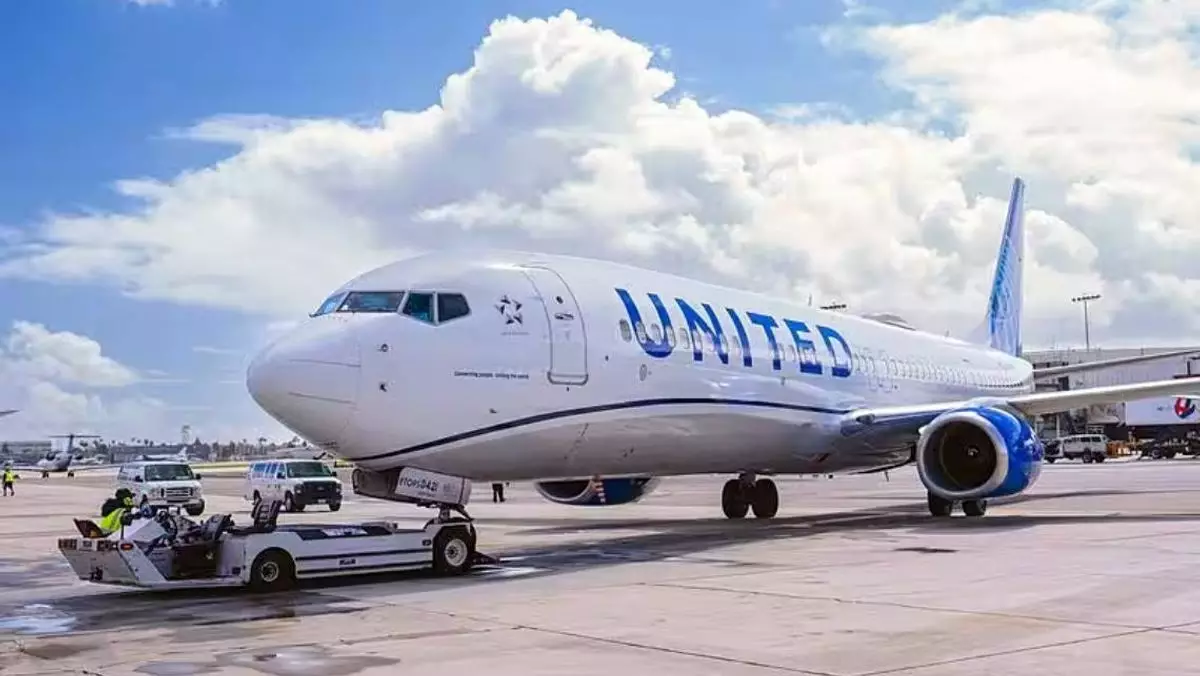United Airlines has faced significant hurdles at Newark Airport in recent months, revealing the fragility of even the most established carriers in the face of operational setbacks. The airline’s operational struggles during late April and May, primarily caused by airport-specific disruptions, led to a marked decline in performance metrics. COO Toby Enqvist highlighted that these issues resulted in a sharp 15% decrease in load factors at Newark, exposing vulnerabilities in airline scheduling and capacity management. Such a downturn underscores how dependent carriers are on airport efficiency and technological robustness. When critical infrastructure falters, even the best strategic plans can unravel swiftly, impacting both revenue and customer trust.
However, what makes United’s story compelling is its demonstration of resilience. The subsequent reopening of a key Newark runway and improved air traffic control systems fostered a rapid turnaround. By June, Newark’s operational performance had significantly rebounded, as evidenced by data showing the airport leading New York-area rivals in punctuality and cancellations. Such recovery is a testament to United’s agility and investment in operational excellence. The airline not only increased flight schedules, pushing daily departures from 290 to 380 within weeks but also achieved its best-ever on-time performance at Newark, a feat that speaks volumes of internal coordination and external partnerships with authorities.
This turnaround offers a powerful lesson: adversity, when addressed swiftly and decisively, can become a catalyst for reinvention. United’s ability to restore confidence at Newark demonstrates a proactive approach that prioritizes passenger experience and operational reliability. It also signals to stakeholders that the airline is capable of navigating and overcoming complex logistical challenges—a crucial trait in today’s unpredictable aviation environment.
Financial Strengths and Strategic Challenges
Despite the operational setbacks, United’s financial performance paints a mixed but cautiously optimistic picture. The second quarter revealed a modest revenue increase of 1.7% year-over-year to $15.2 billion. While this growth headlined only a slight beat over analyst expectations, the underlying numbers reveal more complex dynamics. Rising operating expenses—up 6.5% due to capacity expansion and inflationary pressures—eroded some of the gains, culminating in a net income near $973 million, down over a quarter of a billion dollars compared to last year.
This dip reflects the balancing act airlines face: expanding capacity and boosting revenue in a turbulent macroeconomic landscape while managing costs. United’s strategy appears to be centered on building resilience through operational efficiencies and targeted capacity adjustments. The early signs of July’s 6% sales growth, especially in the lucrative business segment, suggest that the airline’s core markets remain strong when confidence is restored. Long-term success, however, hinges on their ability to maintain this momentum amidst ongoing geopolitical uncertainties and regulatory shifts.
United’s leadership attributes the recent uptick in confidence to stabilizing U.S. policies and a more predictable operating environment. Such political and economic optimism, even amidst lingering tariff threats, adds a layer of confidence to the airline’s forward outlook. Still, risks linger, including fluctuating fuel costs, labor negotiations, and potential policy regressions that could undermine growth trajectories. Hence, United’s focus on operational efficiency, customer experience, and adaptive capacity planning is more critical than ever.
Charting a Resilient Path Forward
What emerges from United’s recent performances is a narrative of resilience, adaptability, and strategic recalibration. The airline’s swift recovery at Newark—once a point of vulnerability—has become a showcase of what focused operational improvements can achieve. It’s not just about bouncing back but exceeding previous standards; Newark’s enhanced punctuality and lower cancellation rates reflect a commitment to excellence that could redefine the airline’s regional reputation.
Financially, United seems to be navigating a delicate landscape, leveraging market confidence and operational improvements to sustain growth. The hike in July sales and the outlook for continued profitability indicate that the airline is poised aside from the turbulence of unforeseen disruptions. But to truly capitalize on this momentum, United must remain vigilant, continuously investing in technology, employee engagement, and customer-centered innovations.
Ultimately, United’s story underscores a fundamental truth: resilience in the airline industry is no longer optional. It is a strategic imperative. The path ahead will demand relentless adaptability—balancing capacity, managing costs, and restoring seamless operations. United’s recent comeback at Newark, backed by strong financial signals, suggests that it is committed to transforming setbacks into stepping stones for a brighter, more reliable future.

